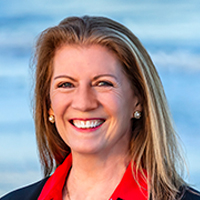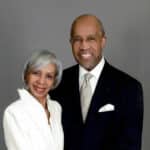
When clients enter their 50s and 60s, they often start looking for advice about where they might live to have the most enjoyable life as they age. Many advisors, myself included, often recommended they consider vibrant urban areas with shopping within walking distance, easy access to entertainment and restaurants, lots of opportunity for interaction with others, good mass transit systems and reputable hospital systems.
COVID-19 has fundamentally changed this conversation. Clients are now anxious about living in densely populated areas where viruses may spread faster and they want to talk about options that won’t expose them to potentially sick people riding up and down elevators and congregating in common living spaces, no matter how classy the building is.
As an advisor, you can help them thoughtfully evaluate other options — including weighing the cost and tradeoffs of them staying right where they are, or exploring the wide variety of independent living communities. Here you have maintenance-free options and built-in amenities such as athletic courts, walking trails and, in some cases, medical facilities.
The fact that clients can buy or lease is especially appealing right now. Selling that 3,500 square foot home in today’s market could pay off rather handsomely and they do not necessarily have to make a final decision on where to put the proceeds unless they are convinced they know exactly where they want to be. By offering ideas and opportunities, you will build closer relationships with clients by helping them consider the most appealing situation for them and what is financially feasible.
Here are seven options that you might want to work through with clients.
• Aging in place. Surveys, including this report from AARP, show most people would like to stay in the current home. When does this make sense for your client and when doesn’t it? Some questions to consider: How attached are they to their current home? Is it near other family members whom they see often and rely on for support? Can it be modified now or later to make it more “aging accessible”? Can it be modified to one floor living? How about the possibility of adding an elevator?
While this option appears to be the path to least resistance, other concerns surface such as upkeep and safety. I had a client that had all the fortune of a one-floor, semi-detached home in a gated community. However, the closest family member was over 20 miles away. As she aged, she began losing her balance and falling. She refused to wear a medical alert device so we installed cameras that would scan the floors in the event of an emergency.
Accessibility may be a big obstacle to remaining in one’s own home. According to the U.S. Census Bureau report “Old Housing, New Needs: Are U.S. Homes Ready for an Aging Population,” only 10% of housing units in the U.S. have a step- free entryway, a bedroom and a full bathroom on the first floor, and at least one bathroom accessibility feature such as handrails or a built-in shower seat.
• 55+ active-living communities. These housing developments, which are typically located in the suburbs and may have a clubhouse for residents, generally offer seniors one-floor living arrangements, outdoor maintenance services (for a fee) and an opportunity to participate in activities and make friends. They can also target certain populations such as singles, golf lovers, boaters, and the like. They are typically designed with older adults in mind offering room-to-room trip-free zones, higher toilets, etc. The cost of these range widely depending on location, amenities, floor plans, on-site security, etc.
• Multigenerational homes. Builders in many areas of the country are offering designs that accommodate three generations, with two master bedrooms and common living areas. This type of housing can work for both “younger” older people (those in their 50s or 60s with children and grandchildren) and with “older” adult children (those in their 50s or 60s with parents in their 90s). Either way, the people in their 50s or 60s would generally have to be OK with playing a caregiver role at least part of the time to the younger or elderly generations.
Dr. Deborah Birx, the public health physician who served as the White House Coronavirus Response Coordinator from 2020 until early January 2021, shares a multigenerational house with her husband, her parents who are in their 90, her daughter and son-in-law, and her grandchildren.
Multigenerational arrangements, once established, are difficult to unwind. Your clients really need to understand the commitment and longevity of their situation. What seems to be a no-brainer now could lead to an uncomfortable situation later. The more questions agreed upon up front helps. At what point is a client in their 50s or 60s no longer equipped to be the caregiver of parents in their 90s? What would that look like? Once you take the keys away, you become the taxi service.
If clients are helping their adult children with either the expenses or childcare, at what point are their services no longer needed? What if a relationship forms with someone outside of the family and they are not well liked? Is there money set aside for the day the client become independent again?
• A new single-family home in a suburb. It does not have to be a retirement community. Do they have the funds to have a custom-built home? What kind of layout works? Can you help clients find a builder? What is important to be located within a short ride? (e.g., hospitals, houses of worship, grocery stores.)
I had a client who finally built a prefab home on a parcel of land across the street from her sister. I helped with the construction mortgage and provided guidance on the local builder and contract agreement. Her son, who had fallen on hard times through COVID, took over the other home with a legal note due her. The conditions were collectively decided upon between me, the client, and her estate lawyer. She now has a small one-level home of her dreams, a steady income, family nearby and the satisfaction in knowing she could help her son.
• An apartment near the hub of a small town. Although not as vibrant as an urban area, it is also not as dense and can be enjoyable for older people who value their independence and like to walk. Being able to get to the library, the post office, drug store and a restaurant on foot, if only for takeout now, could be a big part of someone’s routine and can help keep them physically active. If the town is on a train line to a city, that could be a plus for when the COVID-19 risks dissipate or if city-dwelling children or grandchildren want to come visit.
• High-end assisted living. It is true that many people have been confined to their homes at least some of the time during the Covid 19 pandemic. However, this still might be a good option for many clients who may eventually need some assistance with their daily activities yet can still maintain a sense of privacy and independence. Sure, COVID reduced the number of social activities and common dining area opportunities in these communities. Yet it also provided a heightened level of protection by taking regular temperature checks, sanitizing all common areas frequently and offering a peace of mind that if unfortunate enough to contract the virus, they would be quarantined and well-taken care of in a timely way.
• Repurposing the vacation home. What is increasingly becoming more common are “stay-cationers”! Those clients who held onto two homes are downsizing to that vacation home for good. They’re freeing up the cash flow and reinventing what is important to them.
By having these discussions and working through these options with clients, you are addressing one of their greatest concerns beyond their health. You must remember that senior home investments are less about finances and real estate and more about service and quality of life. Your focus in guiding your clients through this financial decision must be tilted towards risk mitigation rather than return maximization.
Catherine M. Seeber, CFP®, CeFT®, is passionate about blending both financial and nonfinancial needs and desires of her clients to make the most of their resources, time, talents, and energy as they transition through life. Cathy is a vice president, financial advisor with CAPTRUST.







